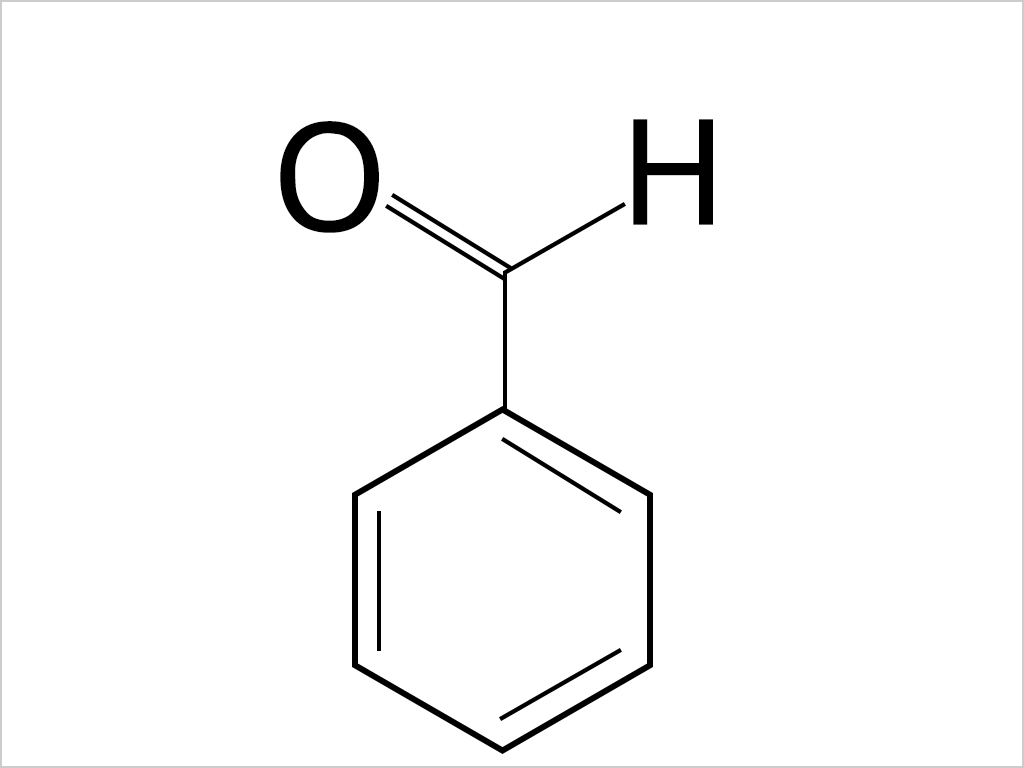Chemical information
- CAS No: 100-52-7
- Chemical formula: C₇H₆O
Benzaldehyde
Benzaldehyde is an arenecarbaldehyde that consists of benzene bearing a single formyl substituent; the simplest aromatic aldehyde and parent of the class of benzaldehydes. When benzaldehyde is acted upon by alkali cyanides, it undergoes a condensation reaction, yielding the substance called benzoin. Benzaldehyde was reacted with benzoin condensation, oxidation and cyclization reaction to product phenytoin sodium under the supersonic wave radiation.
Uses
Benzaldehyde is usually used to flavor foods with almond flavor. Certain cosmetics and personal care products contain benzaldehyde. Benzaldehyde is also used in dye manufacturing (including acridine and aniline dyes), soap manufacturing, and odor control. You can also use almond extract in cakes and baked goods. The single largest use for benzaldehyde ... is the production of benzyl alcohol via hydrogenation. Benzaldehyde is an aromatic aldehyde used in cosmetics as a denaturant, a flavoring agent, and as a fragrance. Another application of benzaldehyde is the production of triphenylmethane dyes. In the pharmaceutical industry benzaldehyde is used as an intermediate in the manufacture of chloramphenicol, ephedrin, ampicillin, diphenylhydantoin, and other products. Benzoic acid and a wide range of derivatives and related benzenic compounds, such as benzaldehyde are commonly used as antibacterial and antifungal preservatives and as flavoring agents in food, cosmetic, hygiene, and pharmaceutical products, Bee repellent /former pesticide/ Chemical intermediate for dyes, flavoring materials, perfumes, and aromatic alcohols; solvent for oils, resins, some cellulose ethers, cellulose acetate and nitrate; flavoring compounds; synthetic perfumes; manufacturing of cinnamic acid, benzoic acid; pharmaceuticals; photographic chemicals. Manufacture of dyes, perfumery, cinnamic and mandelic acids, as solvents; in flavors.

